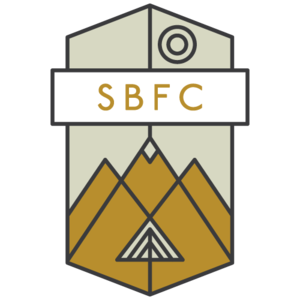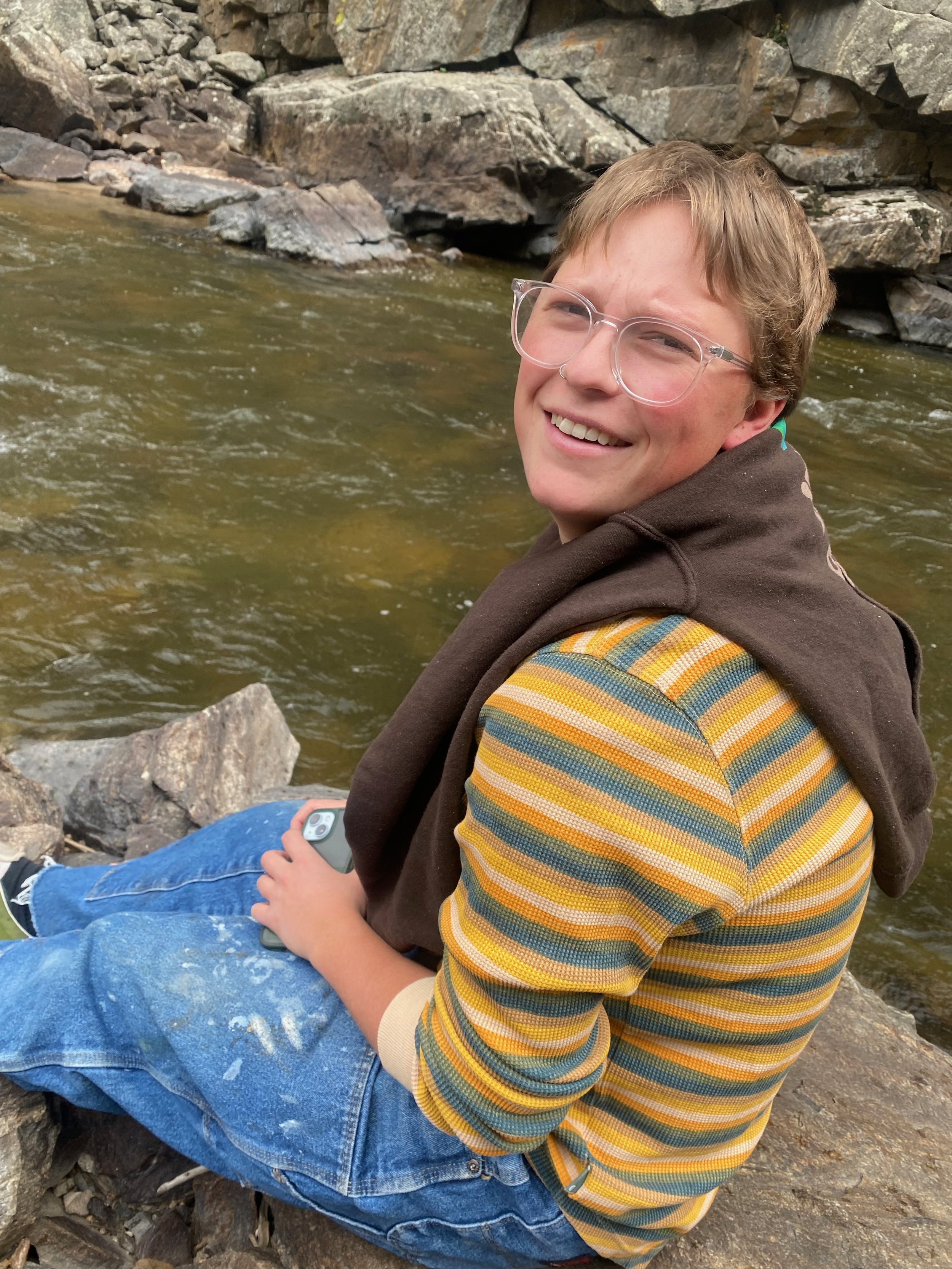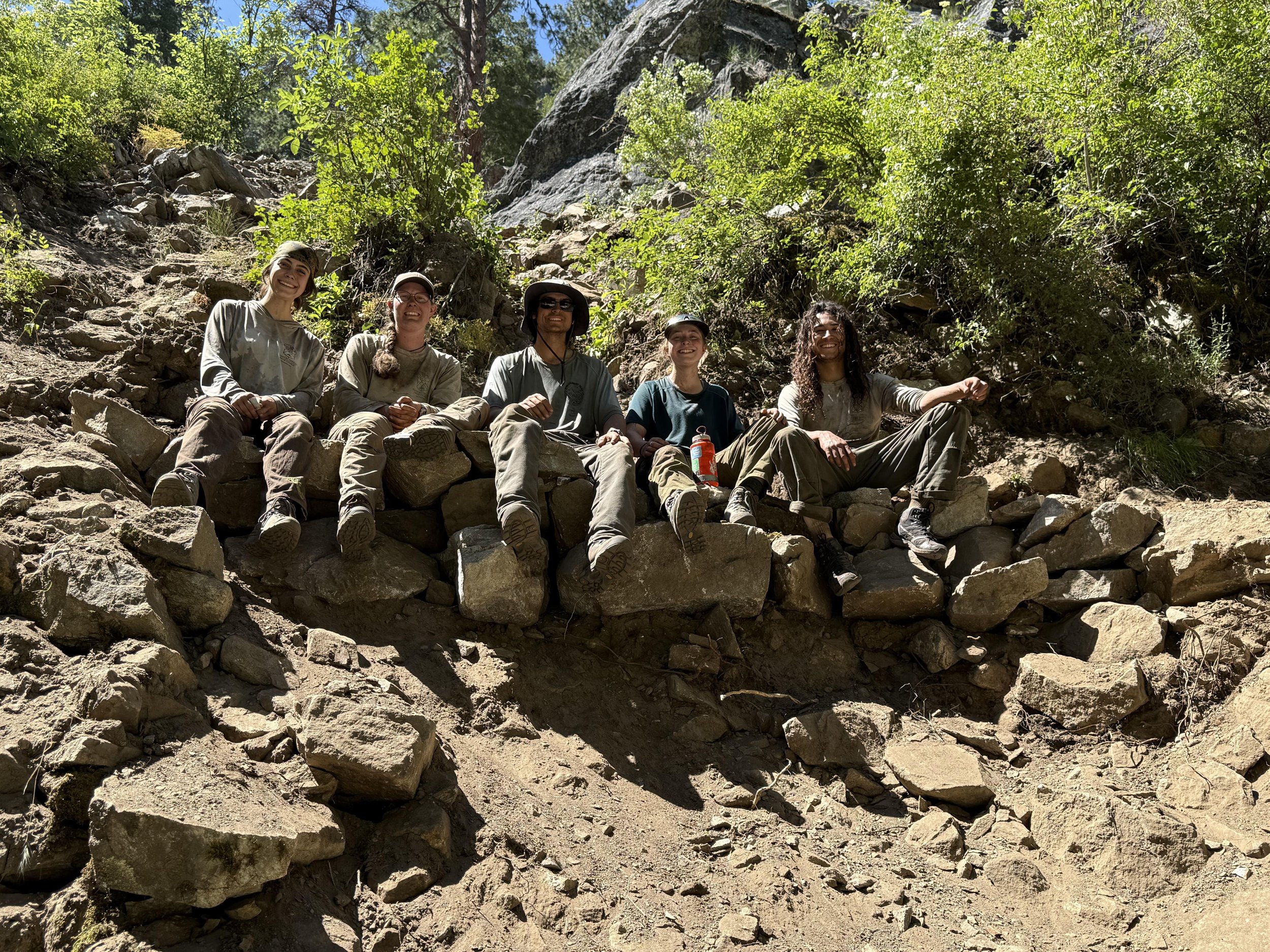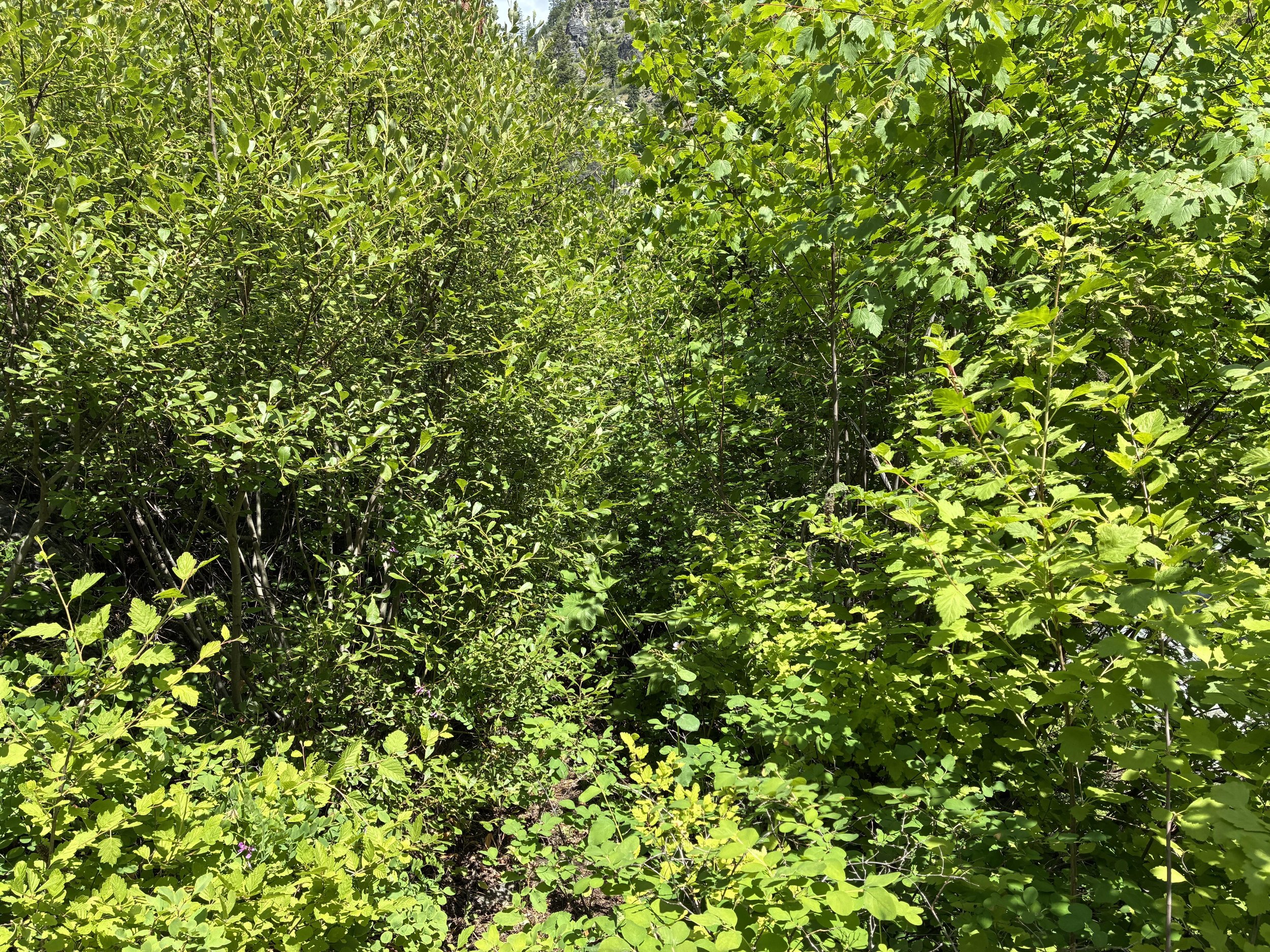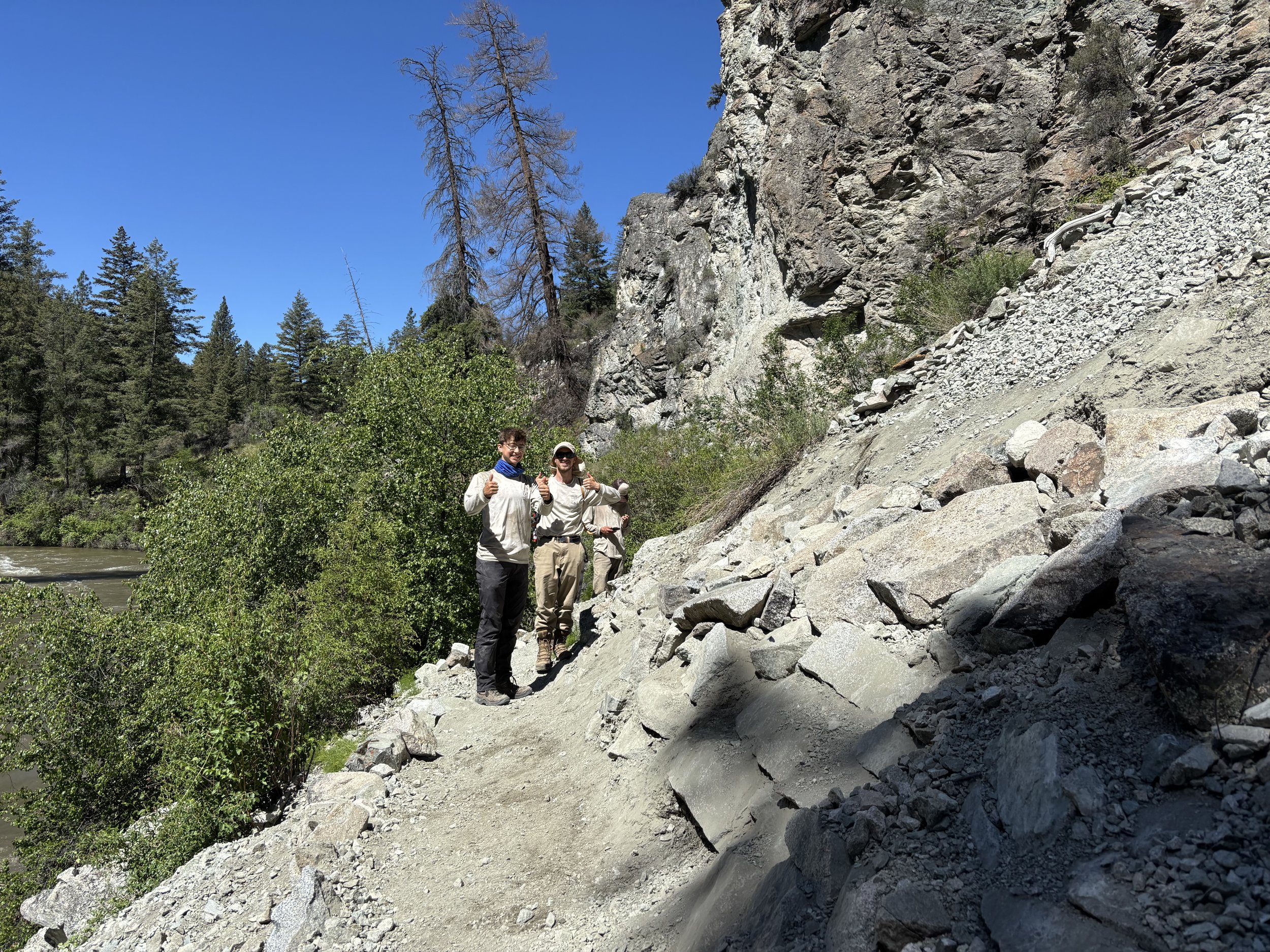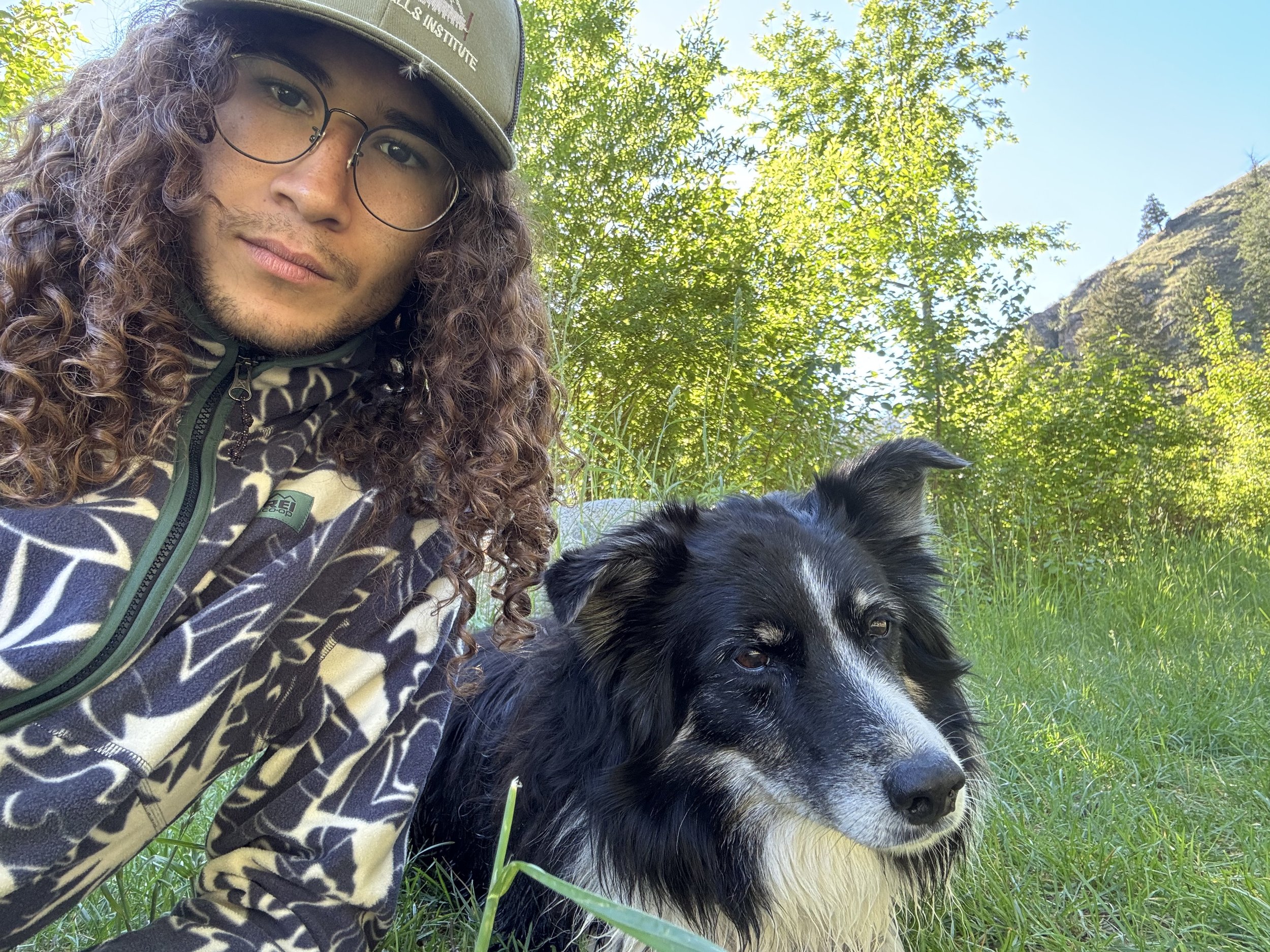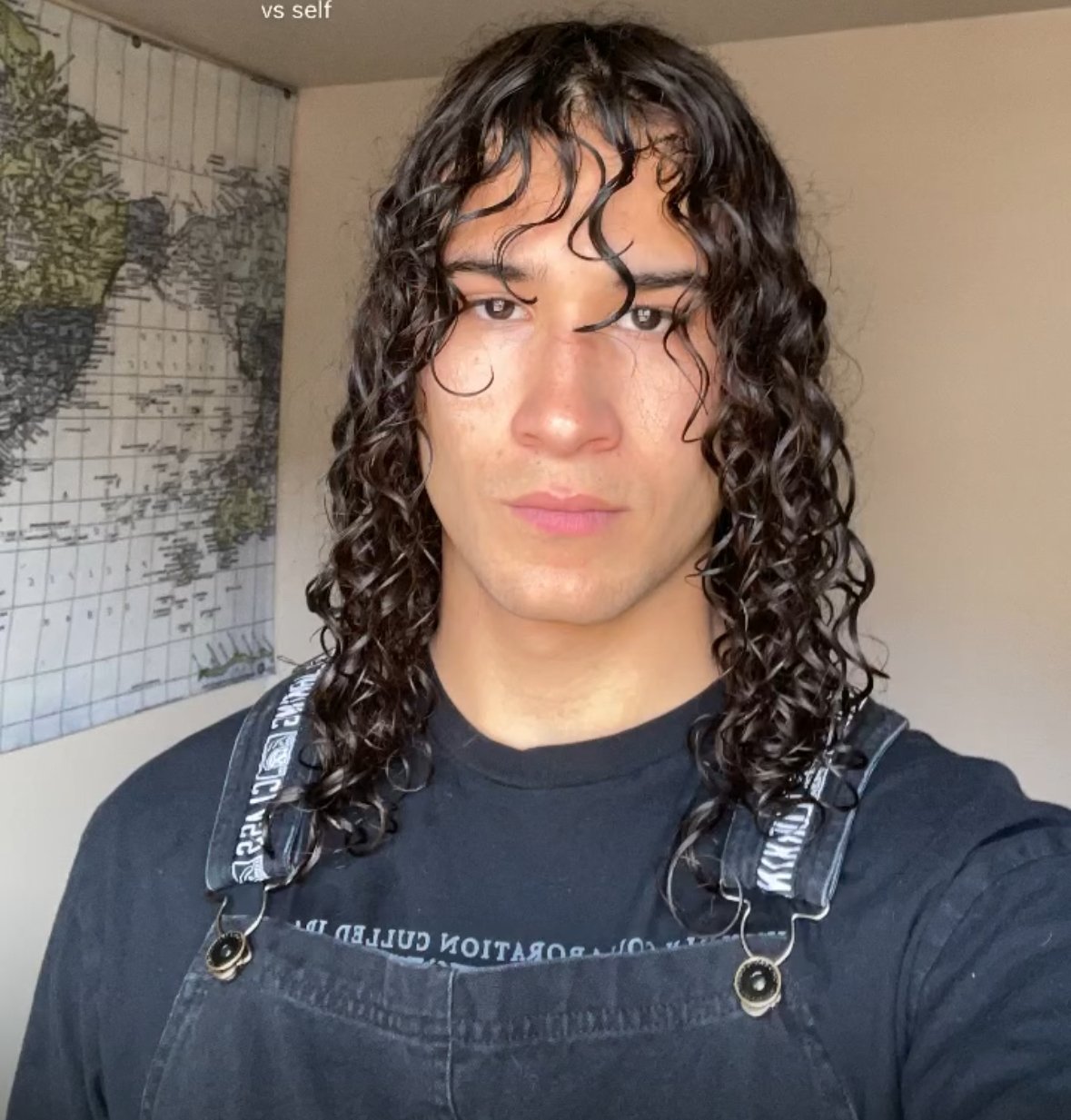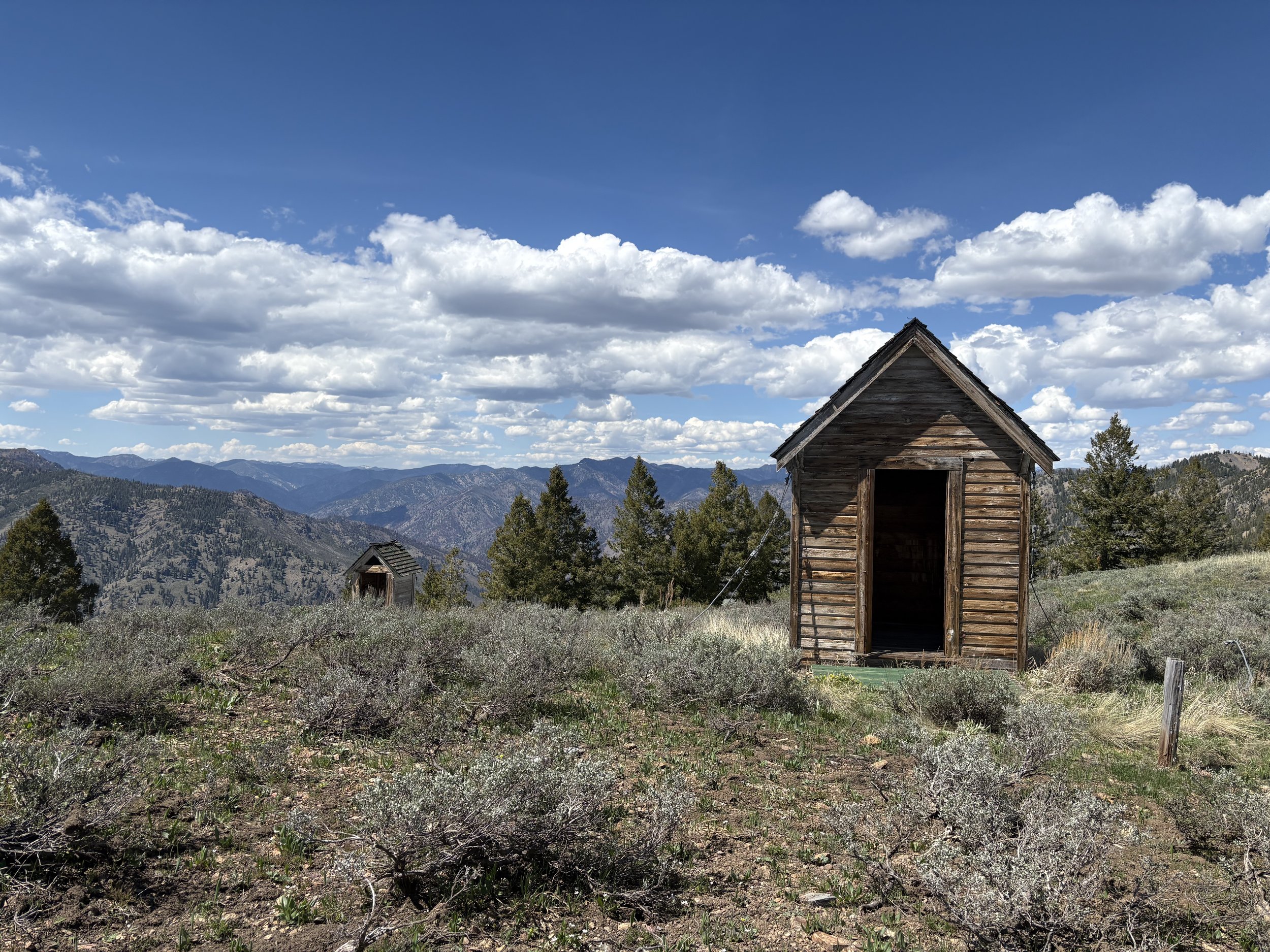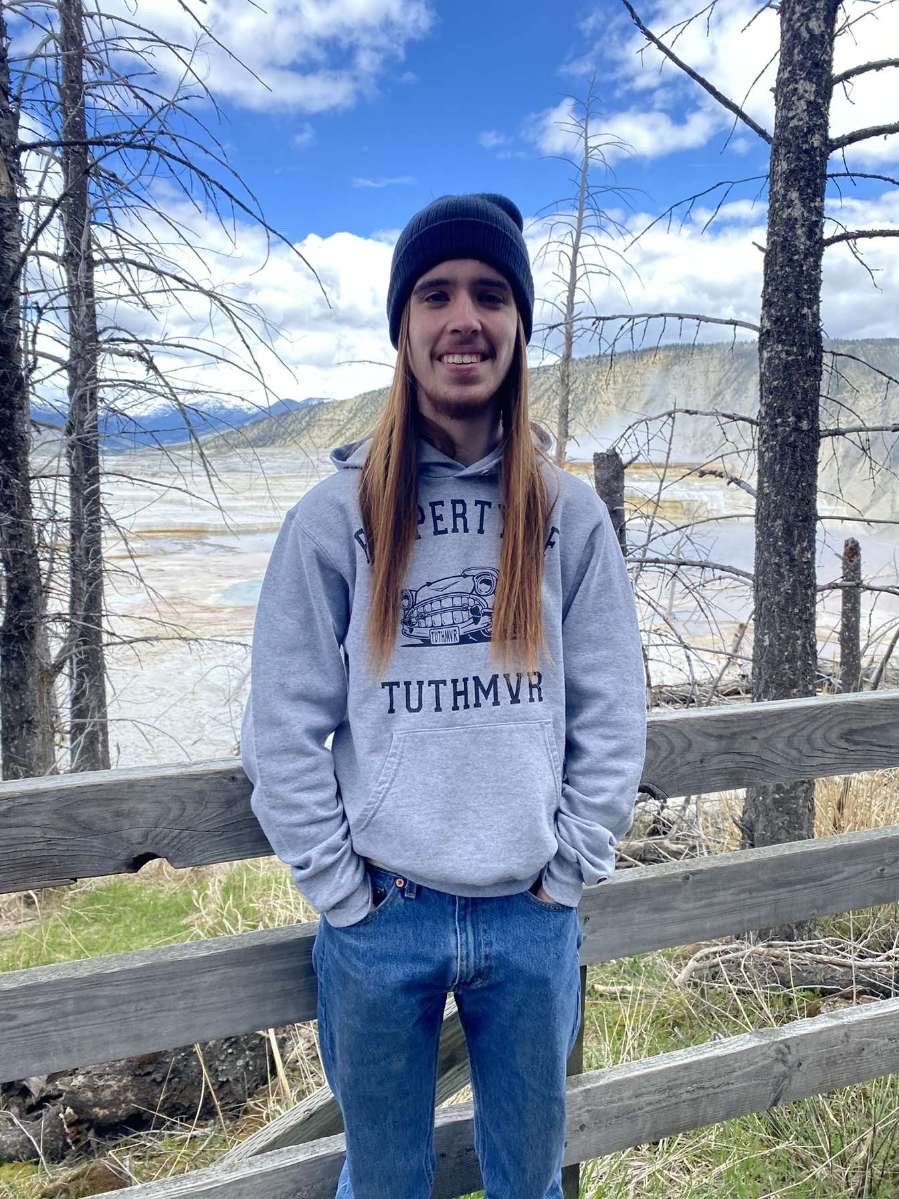Kara Knight
Wilderness Ranger Fellow
South Fork Lolo Trail, Selway-Bitterroot Wilderness
6/18/2025-6/25/2025
Morning stretch circle and safety talk!
I spent this hitch with seven volunteers, one other fellow, Josie, and our crew leader, Martial Jumper. The plan for the week was to work on the last six miles of the South Fork Lolo Trail, heading toward Bass Lake.
It was empowering to witness the strength and perseverance of a group of volunteers who put their lives on hold to join us in tackling this monster of a trail. The trail was in rough shape. Everyone set out on day one eager for the experience. About a mile from camp, we encountered over a hundred downed trees that had to be traversed. We arrived at camp that evening with cuts, bruises, and a very large goal ahead of us. The hitch continued to test us: we faced four days of cold, rainy weather and had a waist-deep water crossing ahead.
Two volunteers: Steve and Jon, moving a large log out of the trail.
Slow mornings gave us time for coffee, tea, oatmeal, and leftovers from the night before (somehow, it always involved couscous). On those rainy days, we sat together and took the time to appreciate the environment we were in. Melissa, one of the volunteers, kept morale high by making pancakes. Steve, Dave, and Jon made sure there was always a hot fire to return to, while Josh, Jake, and Janice kept conversations going. It was encouraging to see such a diverse group of people, with a wide range of interests and personalities, come together with the shared goal of improving this trail.
SBFC volunteer Josh taking on the deep cold water crossing!
The workdays were challenging. Josie and I ran saw teams and loved seeing the excitement and pride from volunteers after a job well done. Everyone persevered through the difficult conditions. We spent the first few days working backward from camp, removing and cutting the trees we had climbed over on our way in. Once that section of trail was cleared, it was time to move forward past the daunting river crossing. The waist-deep water would have been manageable on any other trip, but the cold weather made it tough. After searching unsuccessfully for a log that spanned the creek, we all agreed that the only way across was through it. Once we made it to the other side, we took time to warm up and dry off before continuing up the trail.
Josie, Martial, and I, along with help from some of the volunteers, cooked warm, fulfilling dinners after long days of work. We gathered around the fire to eat and talk about the progress we had made throughout the week. After dinner, we prepared the next day’s lunch, usually stuffing tortillas with whatever dinner had been. The number one thing we learned this week: literally anything can be a burrito, including Alfredo.
Final group picture taken after a job well done.
Kara Knight
El Cajon, CA
Colorado State University- Fish, Wildlife, and Conservation Biology
Kara Knight grew up in San Diego, California, but spent much of her childhood exploring Yosemite, where she fell in love with wildlife and the great outdoors. Her passion for wilderness conservation led her to Colorado in 2020 to attend Colorado State University, where she earned her B.S. in Fish, Wildlife, and Conservation Biology in 2023.
Kara is excited to gain hands-on experience and continue developing her skills. She has a deep appreciation for wildlife research and habitat conservation. You can find her hiking, camping, or spending time with her cat Juni when she's not out in the field!
